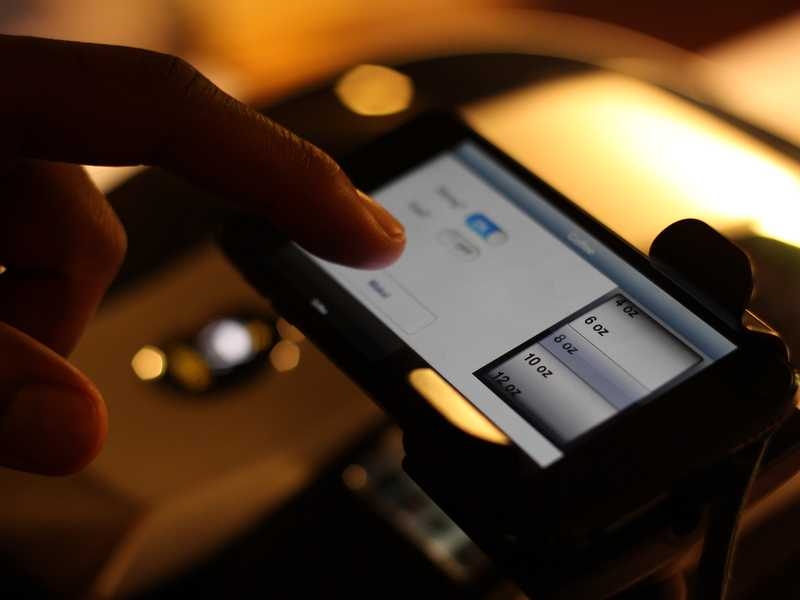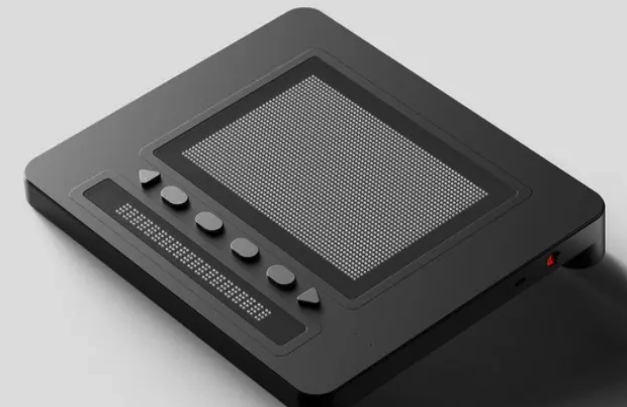OCR Devices for the Blind: Converting Print to Speech in Real-Time
OCR Devices for the Blind: Converting Print to Speech in Real-Time
Blog Article
Empowering Self-reliance With Assistive Innovation for the Blind
The combination of assistive technology into the lives of people with visual disabilities represents a substantial advancement in promoting self-reliance and self-sufficiency. From cutting-edge screen readers to innovative clever walking sticks, these devices not only improve daily navigation and communication yet likewise equip individuals to engage meaningfully in various facets of life. As we discover the myriad benefits and real-world applications of these modern technologies, it comes to be crucial to examine the underlying factors that add to their efficiency and the potential for future growths in this essential field.
Summary of Assistive Innovation

The growth of assistive technology is grounded in concepts of inclusivity and empowerment. Developments in software, hardware, and sensory improvements supply users with alternatives tailored to their details demands. From screen viewers that convert message to speech, to tactile devices that share information via touch, these tools transform the means individuals engage with their environments.
Along with functional applications, assistive technology promotes better social inclusion and involvement in various sectors, consisting of education and learning and work (Mobility aids for visually impaired users). As r & d continue to evolve, the capacity for assistive modern technology to further improve the lives of aesthetically impaired individuals stays encouraging, leading the way for a more equitable society where every person can flourish
Sorts Of Assistive Instruments
A variety of assistive gadgets have actually emerged to support individuals with visual disabilities, each designed to fulfill specific requirements and improve daily performance. These gadgets vary from low-tech options to modern advancements, giving varied alternatives for customers.
Low-tech tools consist of magnifiers and large-print materials that help in reading and writing. Braille tools, such as Braille slates and stylus pens, enable tactile analysis and communication. Alignment and mobility help, like white walking canes, aid individuals navigate their environment securely.
On the greater end of the spectrum, electronic magnification systems and screen readers offer considerable assistance. Digital magnifiers enable users to increase the size of message and images on displays, while display visitors transform digital web content right into synthesized speech, helping with accessibility to information on computers and smart devices.
Mobile phone applications also play a crucial duty, supplying attributes like text acknowledgment and navigation assistance. Wearable innovation, such as clever glasses furnished with augmented fact, is becoming an appealing tool to boost situational understanding.
Benefits of Assistive Technology
The assimilation of assistive innovation significantly enhances the lifestyle for people with visual problems. These technologies empower customers by promoting independence, enabling them to browse their atmospheres more properly and do everyday tasks with greater convenience. For example, display visitors and magnification software enable individuals to gain access to electronic information, cultivating academic and specialist possibilities that may have formerly been out of reach.
Additionally, assistive gadgets such as clever walking sticks and GPS applications offer real-time navigating help, improving mobility and safety. This increased autonomy not only boosts self-worth but also encourages social involvement, allowing users to participate more fully in their neighborhoods.
Assistive modern technology additionally facilitates communication, helping customers connect with others through voice recognition and text-to-speech applications. This capacity is important for preserving connections and accessing essential info.
Additionally, the customization options available with many assistive modern technologies guarantee that users can tailor devices to their specific demands, further enhancing usability and performance. On the whole, the advantages of assistive modern technology for people with visual impairments are extensive, advertising an extra inclusive society where everyone can pursue their goals and goals.
Study and Success Stories
Highlighting the transformative impact of assistive innovation, countless study highlight how people with aesthetic problems have actually efficiently integrated these devices right into review their day-to-day lives. One compelling instance involves a college trainee who made use of screen reading software program to browse academic products and on-line resources efficiently. This modern technology not just facilitated her education and learning yet also enhanced her confidence in getting involved in conversations and team projects.
An additional case research study features an expert that uses a smartphone application made for navigation and object recognition. By using this application, he has actually regained freedom in both his individual and work settings, permitting him to commute independently and engage with colleagues better.
In addition, a retiree shared her experience with braille e-readers, which allowed her to access a substantial range of literature and stay connected with her community with publication clubs.
These success tales emphasize the crucial duty of assistive innovation in cultivating independence, enhancing lifestyle, and advertising social integration for individuals with visual problems (Smart glasses for the visually impaired). By embracing these cutting-edge devices, customers can get over difficulties and take chances that contribute to their specialist and personal fulfillment

Future Fads in Assistive Modern Technology
Development in assistive innovation is positioned to redefine the landscape of assistance for people with aesthetic problems. Arising trends emphasize the integration of synthetic intelligence (AI) and artificial intelligence, which improve the performance of devices that assist with navigating and information accessibility. For instance, AI-driven applications are now efficient in interpreting visual data in real-time, making it possible for customers to involve with their setting more independently.
Additionally, the growth of wearable innovation is advancing swiftly. Smart glasses furnished with augmented fact (AR) can supply audio summaries of surroundings, changing exactly how users engage with public areas. These devices not only advertise freedom yet also foster social incorporation.
Additionally, the Web of Points (IoT) is making homes smarter, permitting smooth connectivity in between assistive tools and everyday devices. This connectivity empowers users by making it possible for voice-activated controls and automatic reactions customized to individual needs.
Final Thought
Finally, assistive technology plays an essential function in empowering individuals with visual disabilities by enhancing their self-reliance and involvement with their surroundings. The diverse variety of applications and tools readily available not only assists in navigating and interaction however additionally advertises social combination and opportunities for individual and expert development. As innovations proceed in this ophthalmology near me area, the potential for improving the lifestyle for those with visual impairments will broaden, promoting better freedom and empowerment.

Report this page